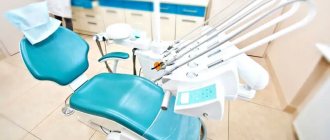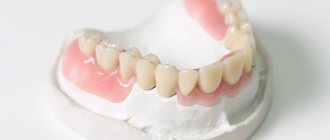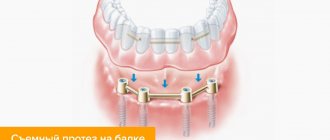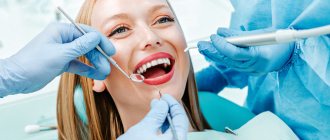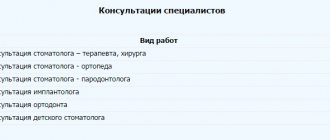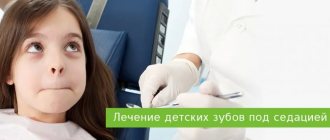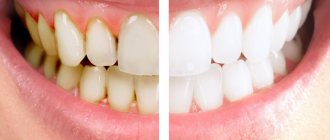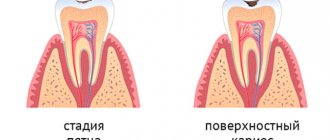Opening a dental office is not as difficult as it seems at first glance. It is important to carefully plan a budget in which equipment for the dental office will be one of the leading expense items.
A small office, unlike a specialized clinic or center, does not require large investments. If you are a novice businessman who does not have impressive financial baggage, then a dental office can be a successful start to a business. You will need less money, since this option requires a small room with a minimum set of high-quality equipment (this is due to the range of services, for example, in a clinic the list of manipulations performed by doctors is many times larger). In the future, as you gain practical experience in running a business, as well as additional funds in the form of earned profits, you will be able to open, for example, a clinic with a more expanded range of services provided.
But what you shouldn’t save on initially is the equipment with which you will treat patients. It is necessary that the equipment meets internationally accepted standards and is equipped with all first-class materials to provide high-quality dental services, regardless of the complexity of the procedure. Comfort during the provision of services and, as a result, the health of clients largely depends on the equipment.
All equipment for a dentist’s office can be divided into three groups: technological, commercial and office. Below we will look at each type in detail.
Technological equipment of a dental clinic
Technological equipment includes dental units and installation technology; in addition, regular purchases of consumables, filling preparations and tools for work are necessary.
Basic equipment of dental clinics (types):
Dentist chair
We are talking about a dental unit - a chair for the patient; not a single dentist can do without it. Such professional dental equipment varies according to the type of drive. Mostly models with hydraulic or electromechanical drive are sold. Typically, the installation is equipped with at least 4 hoses:
- for a gun (spray, water or air is supplied);
- for a micrometer (determining crown thickness and other manipulations in dental practice);
- for ultrasonic scaler (removal of stones and plaque);
- under the lamp.
- Also, any dental unit is equipped with a set of different tips for all types of work.
Visiograph
This is equipment that allows you to take the most accurate picture of a tooth. The picture immediately appears on the computer screen to which the visiograph is connected.
Dentist's chair
This is also necessary equipment for a dental office, and the chair must be comfortable and functional. In addition, it should have the maximum number of adjustments: at least in height and angle of rotation.
Refrigerator for dental drugs and consumables
Needed for storing medications. There are models on sale that allow you to set different temperature conditions for each cell of the refrigeration chamber.
Dental autoclave
In the list of equipment for a dental office, the autoclave occupies an important place; it is used to disinfect instruments. The main differences are?
- the material from which it is made;
- method of fastening the cover;
- presence of a drain valve;
- operating modes, etc.
Sanitation equipment
The complete list of dental office equipment must include two sinks:
- For hand disinfection.
- For disinfection of instruments.
There must be containers with a solution for processing.
How much does it cost to open a dental office: financial plan with calculations
Cost items for a startup:
- Registration, obtaining licenses and permits – 60,000 rubles.
- Rent of premises – 60,000 rubles.
- Repair and finishing work, furniture – 300,000 rubles.
- Equipment, materials – 1,200,000 rubles (for 3 jobs).
- Marketing (advertising sign, leaflets, brochures, business cards, website, advertisements in the media, on forums) – 70,000 rubles.
- Other expenses – 100,000 rubles.
Monthly expenses:
- Salary - 270,000 rubles.
- Rent - 60,000 rubles.
- Utility bills - 20,000 rubles.
- Taxes - 30,000 rubles.
- Maintenance of equipment and purchase of materials - 8,000 rubles.
In this business plan, we are considering opening an economy class office. The average bill per client in Russia is $50 (3,400 rubles). If 3 specialists work and there are 12 clients per day, the average daily revenue will be 40,800 rubles.
Table No. 3. Financial indicators
| Index | Digital value |
| Initial investment amount | 1,790,000 rubles |
| Monthly expenses | 388,000 rubles |
| Productivity per day | 40,800 rubles |
| Monthly income | 1,142,400 rubles |
| Net profit per month | 754,400 rubles |
| Payback period | 3 months |
3 months is an optimistic forecast that will only come true if the account is fully loaded. You need to be prepared for the fact that at first there will be few clients and the payback period will be longer.
Basic requirements for medical furniture.
Medical furnishings are used to equip clinics, hospitals, health resorts and other rehabilitation and health institutions. When choosing medical furniture, it is necessary to take into account the location and features of its use.
The specific use of medical furniture determines the nature of the requirements for it. These requirements, compliance with hygienic norms and standards are established by sanitary and epidemiological supervision. Medical furniture must be safe to use, reliable, durable and functional, as well as meet the demands of increased comfort, ergonomics and aesthetics.
One of the primary requirements is resistance to the aggressive effects of disinfectants. Compliance with a strict regime of sanitary hygiene in medical institutions, frequent cleaning, disinfection using special preparations and frequent quartzing are a prerequisite for the normal functioning of a medical institution. Therefore, this parameter must be taken into account when choosing medical furniture: the surface should be free of roughness and cracks, where dirt could accumulate, cleaning and processing of furniture should take place without difficulty.
In rooms with increased sanitary hygiene requirements (procedure rooms, operating rooms, washing rooms), furniture and premises are regularly subjected to special treatment (use of disinfectants and ultraviolet light). Therefore, in addition to chemical inertness and resistance to repeated treatments, furnishings must be mobile and easily rearranged. Often, samples of medical furniture are equipped with wheels for ease of movement. In addition to maneuverability, the furniture should be small in size so as not to clutter up the workspace for medical staff.
Since the environment in medical institutions, unlike at home, is heavily used, furniture for medical institutions must have a high degree of wear resistance.
Brief market analysis
Dentistry has been a leader in the ranking of commercial areas since 2010.
If you look at the ratio of public and private institutions in Moscow, you will find that budget ones account for only 4%. That is, the remaining 96% are commercial organizations. Hence the conclusion: competition in the industry is high.
However, it is not competitors who pose more obstacles to a novice businessman, but the state, which puts forward strict requirements for premises, licensing, certification, and installation of x-ray equipment.
The most sought-after specialists in the industry are surgeons and therapists. Orthodontists follow them. Generalist doctors account for 11% of demand, another 6% for pediatric specialists. Every year prosthetics becomes more popular.
According to an analysis by the Russian Ministry of Health, in 2019-2021, industry growth will be about 12% per year. Such forecasts are due to the high profitability and short payback period of dental institutions. So, in the capital the profit volume is 30%, in the provinces – 20%.
Why does the current Order become invalid?
Until the end of 2021, Order of the Ministry of Health and Social Development of the Russian Federation dated December 7, 2011 No. 1496n “On approval of the Procedure for providing medical care to the adult population for dental diseases” is applied. From January 1, 2021, this order will no longer be in force for a number of reasons.
The first reason is the publication of Decree of the Government of the Russian Federation dated June 17, 2020 No. 868. This resolution, in turn, was issued within the framework of the so-called “regulatory guillotine”.
The “regulatory guillotine” is a mechanism aimed at creating a modern and adequate regulatory system based on identifying and regulating the most significant public risks.
The mechanism is aimed at eliminating the excessive requirements of public authorities imposed on organizations of various forms of ownership, and introducing new updated requirements based on a risk-oriented approach to the activities of organizations.
In other words, the “regulatory guillotine” aims to eliminate redundant requirements and make it easier for organizations to comply with legal requirements.
The second reason is the activity of specialized associations that insisted on updating the requirements and, in particular, the standards for equipping dental clinics. Thus, the equipment standards prescribed by the procedure for providing medical care have become significantly outdated after almost 10 years of use. It was necessary to update the lists of necessary equipment and bring them into compliance with other regulations.
Accordingly, it can be assumed that the new order of the Ministry of Health, approving the Procedure for providing medical care to the adult population for dental diseases, should contain more harmonious requirements for dental clinics and their employees. In fact, this Procedure in some places raises questions from the professional community. Let's consider its provisions.
New Procedure for providing medical care to adults for dental diseases
Let's look point by point at the Order of the Ministry of Health of Russia dated July 31, 2020 No. 786n “On approval of the Procedure for providing medical care to the adult population for dental diseases” (hereinafter referred to as the New Order) in comparison with the current Order of the Ministry of Health and Social Development of the Russian Federation dated December 7, 2011 No. 1496n “On approval of the Procedure for providing medical care to the adult population for dental diseases” (hereinafter referred to as the Old Order).
So, according to the Old Order, medical care is provided to the adult population for dental diseases of the teeth, periodontium, oral mucosa, tongue, salivary glands, jaws, face and head, including:
- carious, non-carious and other dental lesions;
- acute, chronic and specific inflammatory diseases, acute and chronic trauma, acquired defects and deformations, oncological diseases of the periodontium, oral mucosa, tongue, salivary glands, jaws, face and head;
- anomalies and defects in the development of teeth, jaws, face and head, their prerequisites and consequences.
The new order contains a similar provision, but the mention of “face and head” has disappeared from it. In principle, the parts devoted to maxillofacial surgery are excluded from the New Order, since for this area of medical activity a separate order of the Ministry of Health of Russia dated June 14, 2019 No. 422n “On approval of the Procedure for the provision of medical care in the profile of “maxillofacial surgery” is provided. Thus, from 2021, the existing duplication of regulations governing the activities of maxillofacial surgeons will be eliminated. When providing medical services in the field of maxillofacial surgery, it is the Procedure approved by Order No. 422n that will be mandatory to comply with.
The New Order also reduced the number of types of medical care:
| Old order | New order |
| Medical care for the adult population for dental diseases is provided in the form of: | |
|
|
That is, the New Order no longer provides for this type of medical care for the adult population in the “Dentistry” profile, such as emergency medical care.
Instead, the New Order contains instructions on the forms of medical care for dental diseases:
- emergency form (provided for sudden acute diseases, conditions, exacerbation of chronic diseases that pose a threat to the patient’s life);
- emergency form (provided for sudden acute diseases, conditions, exacerbation of chronic diseases, without obvious signs of a threat to the patient’s life);
- planned form (provided during preventive measures, for diseases and conditions that are not accompanied by a threat to the patient’s life, do not require emergency and urgent medical care, and delaying the provision of which for a certain time will not entail a deterioration in the patient’s condition, a threat to his life and health).
As a positive innovation, we can note the inclusion in the text of the Procedure of brief definitions of emergency and emergency forms of medical care, since in practice the distinction between these forms raises a number of questions. The New Order also contains generalized medical indications for the provision of medical care in the form of emergency and emergency medical care, which are inflammatory diseases of the oral cavity, including the oral mucosa, tongue, salivary glands of various etiologies and localizations.
Let us consider the conditions for providing medical care to the adult population for dental diseases.
In accordance with the New Order, medical care for dental diseases can be provided on an outpatient basis and in a day hospital:
| Conditions for providing medical care | Criteria |
| outpatient | in conditions that do not provide round-the-clock medical supervision and treatment |
| in a day hospital setting | in conditions that provide medical supervision and treatment during the day, but do not require round-the-clock medical supervision and treatment |
Thus, the possibility of treating dental patients in a day hospital will allow doctors to monitor patients when necessary, for example, if they are elderly people with concomitant chronic diseases.
Let's sum up the intermediate results. In accordance with the New Order, medical care for the adult population for dental diseases is provided within the following criteria:
| Type of medical care | Conditions | Forms |
| Primary health care | Outpatient | Emergency |
| Specialized | Day hospital | Urgent |
| Planned |



